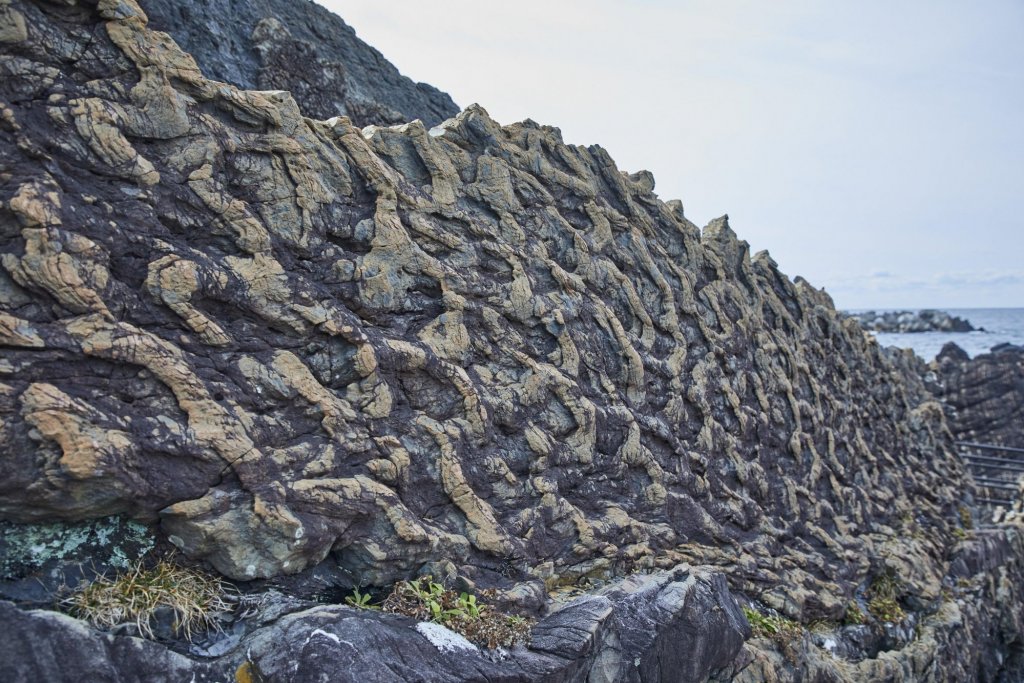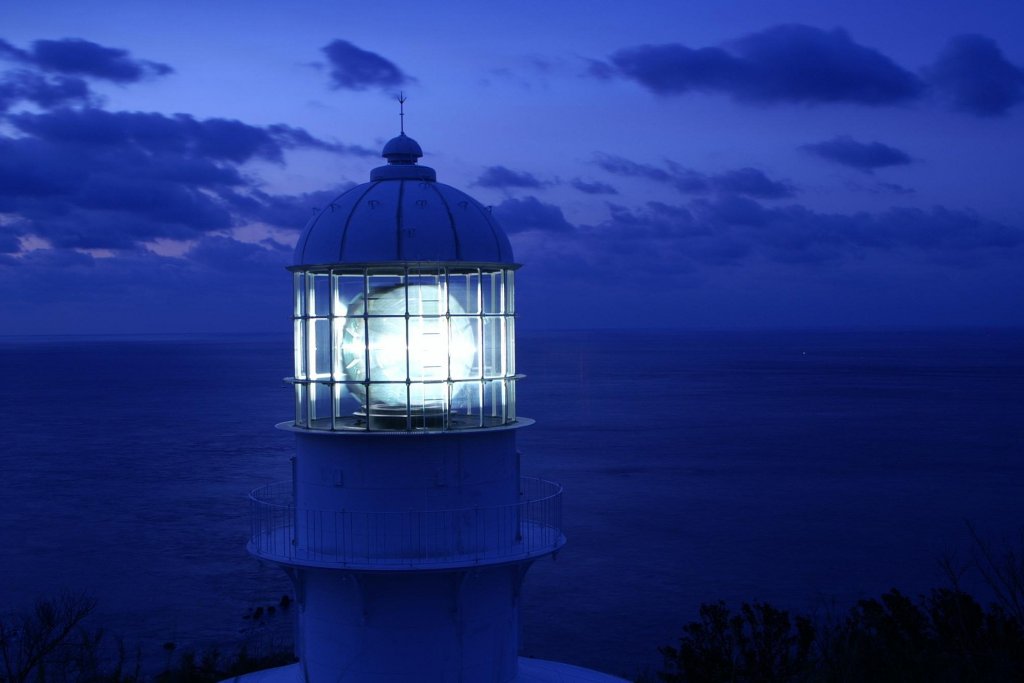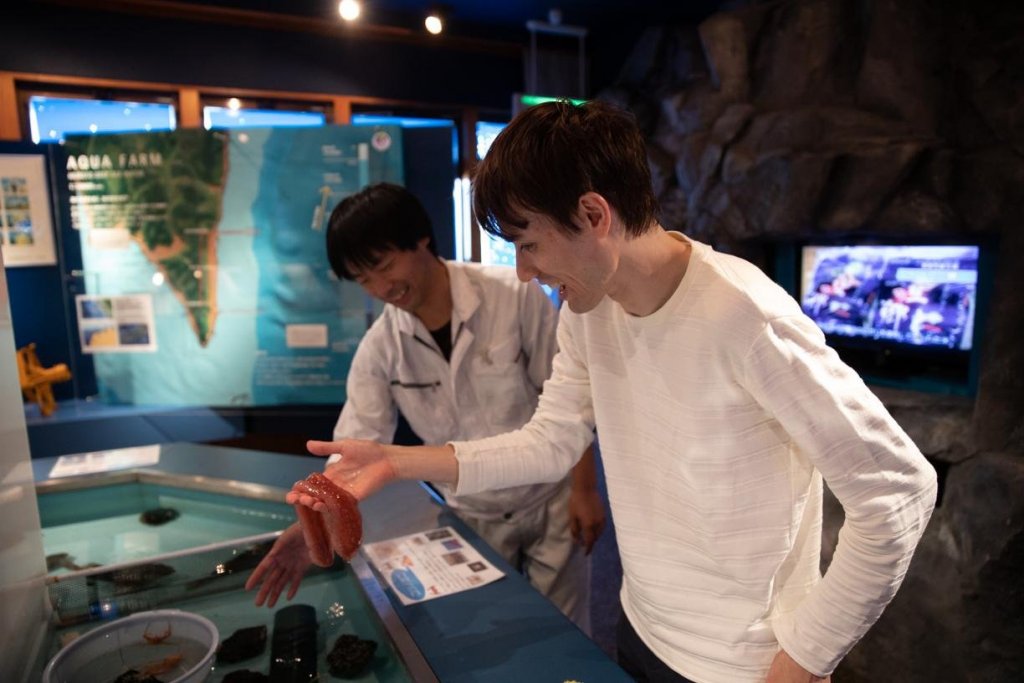Discovering Muroto UNESCO Global Geopark
Muroto sits at the most south-easterly point of Kochi Prefecture, where the land and sea come together in a rugged coastline, dotted with massive, fantastically-shaped rock formations created by the movement of tectonic plates. Besides exploring the coastal trail, you can relax in steam pools of deep sea water, sample locally caught fish, and check out a few major spots on the Shikoku 88 Temple Pilgrimage.
About Muroto UNESCO Global Geopark
UNESCO Global Geoparks are unified areas with important geological heritage that are managed with a holistic concept of protection, education and sustainable development.
Starting around 50 million to 16 million years ago, sediment on the floor of the Pacific Ocean created new land, which was thrust up to the surface through tectonic movement of the oceanic and continental plates. In Muroto you can observe dramatic (and ongoing) geological changes of the earth’s crust up close, for which the area was designated a Global Geopark in 2011.
At the Muroto UNESCO Global Geopark you can see formations that tell of the earth’s movement, valuable sediment and fossils, and flora and fauna that have been designated national Natural Monuments.
Muroto is also dotted with places that are connected to the Buddhist monk Kukai, also known as Kobo Daishi. Besides founding the Shingon school of Buddhism, Kukai is also closely associated with the Shikoku 88 Temple Pilgrimage (or Ohenro) that circles the entire island of Shikoku.
Starting around 50 million to 16 million years ago, sediment on the floor of the Pacific Ocean created new land, which was thrust up to the surface through tectonic movement of the oceanic and continental plates. In Muroto you can observe dramatic (and ongoing) geological changes of the earth’s crust up close, for which the area was designated a Global Geopark in 2011.
At the Muroto UNESCO Global Geopark you can see formations that tell of the earth’s movement, valuable sediment and fossils, and flora and fauna that have been designated national Natural Monuments.
Muroto is also dotted with places that are connected to the Buddhist monk Kukai, also known as Kobo Daishi. Besides founding the Shingon school of Buddhism, Kukai is also closely associated with the Shikoku 88 Temple Pilgrimage (or Ohenro) that circles the entire island of Shikoku.
Get Your Bearings at the Muroto Global Geopark Center
Before heading out to explore, stop by the Muroto Global Geopark Center to learn about Muroto, pick up maps or ask the staff for tips about getting around within the Geopark. Learn about the environment, subtropical plants, history and culture that are being holistically preserved in the Geopark from display panels, dioramas, and video displays.
The Living Geology of Cape Muroto
Cape Muroto, at the tip of the Muroto Peninsula, juts out into the Pacific Ocean in a triangular shape. Walking the Ransho Boardwalk that runs along the coastline for 2.6km, you can see rocks formed from hardened magma and land that was at the bottom of the deep ocean about 16 million years ago. The dramatic uplifts along the shoreline are sections that were forced up by large earthquakes, and the coast actually continues to creep up by a couple centimeters each year, one of the fastest rates of uplift in the world. While exploring keep an eye out for:
●Kukai Iwa
This huge rock formation looks like the face of a person viewed from the side. The name is also connected to the Buddhist monk Kukai, who is thought to have trained near here in his quest to attain enlightenment.
●Turbidites
You can’t miss these rock formations with their clearly striped pattern. The different colored stripes were formed on the bottom of the sea, as mixtures of sand and mud built up one on top of the other, before being lifted out of the ocean and twisted by plate movements.
●Cape Muroto Observatories
You can see both the east and west coast of Cape Muroto, making it a popular spot for photographers who want to capture the daruma sunrise and sunset. When the sun is close to the water, a mirage makes the sun look like a round daruma doll is poking its head over the horizon.
Guided tours are available for those who wish to learn more about the rock formations, local plants and the history and culture of Muroto.
●Kukai Iwa
This huge rock formation looks like the face of a person viewed from the side. The name is also connected to the Buddhist monk Kukai, who is thought to have trained near here in his quest to attain enlightenment.
●Turbidites
You can’t miss these rock formations with their clearly striped pattern. The different colored stripes were formed on the bottom of the sea, as mixtures of sand and mud built up one on top of the other, before being lifted out of the ocean and twisted by plate movements.
●Cape Muroto Observatories
You can see both the east and west coast of Cape Muroto, making it a popular spot for photographers who want to capture the daruma sunrise and sunset. When the sun is close to the water, a mirage makes the sun look like a round daruma doll is poking its head over the horizon.
Guided tours are available for those who wish to learn more about the rock formations, local plants and the history and culture of Muroto.
Cape Muroto and the Shikoku 88 Temple Pilgrimage
Cape Muroto has an important connection with the Buddhist monk Kukai, who is associated with the 1200km Shikoku 88 Temple Pilgrimage, as this is where he is said to have reached enlightenment. You can see the Mikurodo Cave, where he is said to have trained. The cave was carved by the force of the waves, and the view of the sky and ocean from within is said to be the inspiration behind his chosen name, as the two kanji characters of Kukai mean “sky” and “sea.” The nearby Shinmeikutsu Cave is where the monk attained his enlightened state.
Hotsumisaki-ji Temple, the 24th stop on the pilgrimage route, is on a nearby promontory, right above the Cape Muroto Lighthouse. Be sure to tap the large stone with little hollows, which rings out in lovely clear tones.
Hotsumisaki-ji Temple, the 24th stop on the pilgrimage route, is on a nearby promontory, right above the Cape Muroto Lighthouse. Be sure to tap the large stone with little hollows, which rings out in lovely clear tones.
Cape Muroto Lighthouse
This white lighthouse sits 151m above sea level overlooking the Pacific Ocean on the tip of Cape Muroto. It has been protecting ships navigating the waters around Cape Muroto since its construction in 1899. The lighthouse is the second oldest iron lighthouse in Japan and the lens is one of the most historically valuable. With a diameter of 2.6m, the beam from the lighthouse can reach up to 49km away.
Deep Sea Water
Thanks to the geological activity in this area, deep sea water from the deepest parts of the ocean rises closer to the surface right off the coast of Muroto. The water is drawn up from depths that sunlight can’t reach and is very pure. Deep sea water has a well-balanced mineral content and can be used in a variety of ways.
●Searest Muroto
One of the most enjoyable ways of experiencing deep sea water is to swim in it! Located right along the coast, Searest Muroto is a thalassotherapy health and wellness center that uses Muroto’s deep sea water in their warm pool (set at a comfortable 34 degrees Celsius), outdoor jacuzzi, and Finnish sauna. The powerful water jets are particularly nice, great for massaging tired muscles. If you don’t have a bathing suit with you, you can rent one from the facility. If you don’t feel like swimming, there is also a free deep sea water foot bath outside.
Address: 3795-1 Murotomisaki-cho, Muroto City
TEL: 0887-22-6610
Hours: 10:00am~9:00pm
Closed on the 2nd and 4th Wednesday of the month
Admission: Pool/sauna/bath 1300 yen
●Muroto Deep Sea Water Aqua Farm
This facility gathers and supplies deep sea water. There are information displays and videos set up so you can find out all about this precious resource. They also sell skincare, cosmetics, beverages, seasoning and sweets made with deep sea water.
Address: 3507-1 Murotomisaki-cho, Muroto City
TEL: 0887-24-2822
Hours: 9:00am~5:00pm
Closed on Sundays and public holidays
Admission: Free
●Searest Muroto
One of the most enjoyable ways of experiencing deep sea water is to swim in it! Located right along the coast, Searest Muroto is a thalassotherapy health and wellness center that uses Muroto’s deep sea water in their warm pool (set at a comfortable 34 degrees Celsius), outdoor jacuzzi, and Finnish sauna. The powerful water jets are particularly nice, great for massaging tired muscles. If you don’t have a bathing suit with you, you can rent one from the facility. If you don’t feel like swimming, there is also a free deep sea water foot bath outside.
Address: 3795-1 Murotomisaki-cho, Muroto City
TEL: 0887-22-6610
Hours: 10:00am~9:00pm
Closed on the 2nd and 4th Wednesday of the month
Admission: Pool/sauna/bath 1300 yen
●Muroto Deep Sea Water Aqua Farm
This facility gathers and supplies deep sea water. There are information displays and videos set up so you can find out all about this precious resource. They also sell skincare, cosmetics, beverages, seasoning and sweets made with deep sea water.
Address: 3507-1 Murotomisaki-cho, Muroto City
TEL: 0887-24-2822
Hours: 9:00am~5:00pm
Closed on Sundays and public holidays
Admission: Free
Other Things to Do in Muroto
After exploring the natural wonders of Cape Muroto there is still more to see. Check out the local aquarium (housed in a former school!) or meet with playful dolphins. For lunch, try the local specialty, a rice bowl topped with freshly caught kinmedai (alfonsino) sashimi.
●Muroto Schoolhouse Aquarium
This aquarium is housed in a renovated former elementary school. Displays of local marine life in water tanks are set up inside what were once classrooms, and the pool that was once used by elementary school students for swimming lessons now houses more finned friends, including sea turtles and small sharks.
With its schoolhouse feel still intact, the Muroto Schoolhouse Aquarium is the only attraction of its kind in the world!
●Muroto Dolphin Center
You can interact with dolphins at this center. See dolphins up close and join in activities where you can touch, feed and even swim with dolphins.
●Muroto Cuisine
Be sure to try a few dishes featuring the local specialty, a bright red deep water fish called kinmedai (alfonsino). The Muroto area has the largest catch of the prized fish in western Japan, and as the docks are close by, in Muroto you can enjoy some of the freshest kinmedai in the country. One of the most popular ways to serve it is a rice bowl lavishly topped with kinmedai , both as sashimi and in a teriyaki sauce, sometimes accompanied by a few slices of another Kochi favorite, katsuo (bonito).
Ryotei Kagetsu
Kamameshi Hatsune
●Muroto Schoolhouse Aquarium
This aquarium is housed in a renovated former elementary school. Displays of local marine life in water tanks are set up inside what were once classrooms, and the pool that was once used by elementary school students for swimming lessons now houses more finned friends, including sea turtles and small sharks.
With its schoolhouse feel still intact, the Muroto Schoolhouse Aquarium is the only attraction of its kind in the world!
●Muroto Dolphin Center
You can interact with dolphins at this center. See dolphins up close and join in activities where you can touch, feed and even swim with dolphins.
●Muroto Cuisine
Be sure to try a few dishes featuring the local specialty, a bright red deep water fish called kinmedai (alfonsino). The Muroto area has the largest catch of the prized fish in western Japan, and as the docks are close by, in Muroto you can enjoy some of the freshest kinmedai in the country. One of the most popular ways to serve it is a rice bowl lavishly topped with kinmedai , both as sashimi and in a teriyaki sauce, sometimes accompanied by a few slices of another Kochi favorite, katsuo (bonito).
Ryotei Kagetsu
Kamameshi Hatsune






























